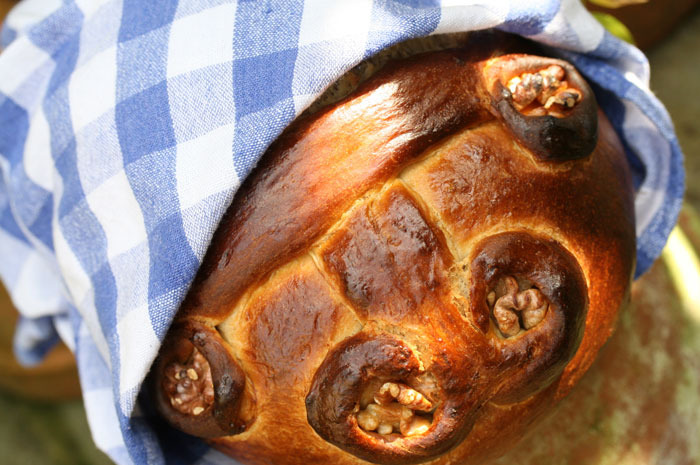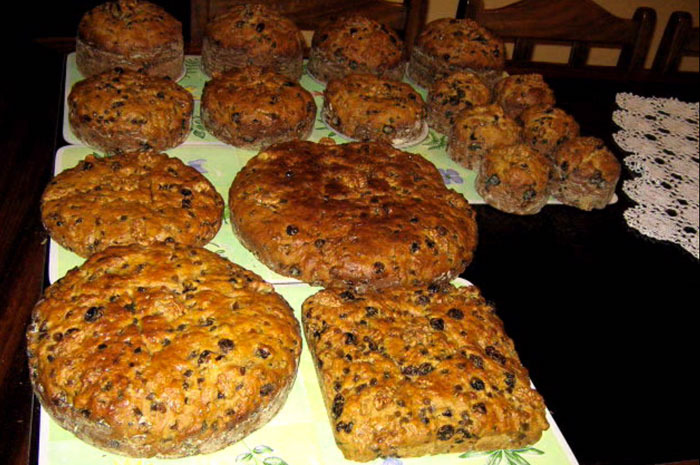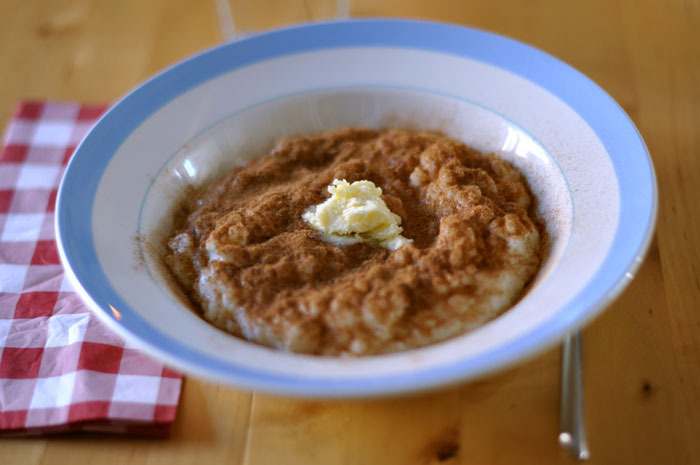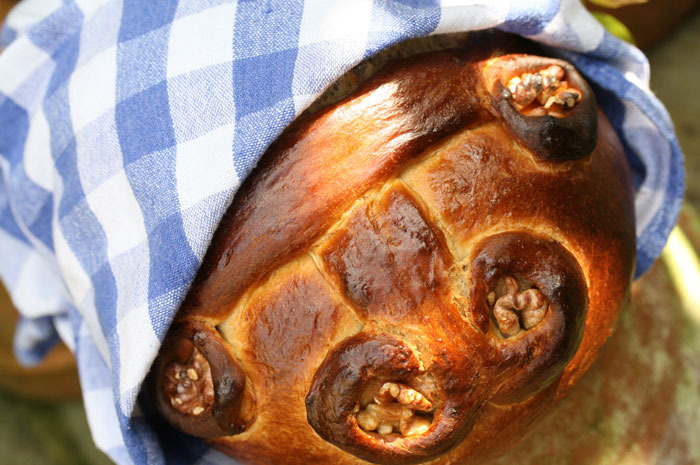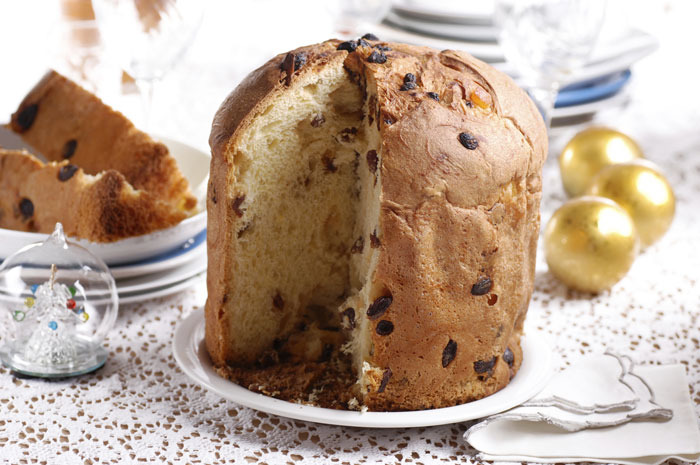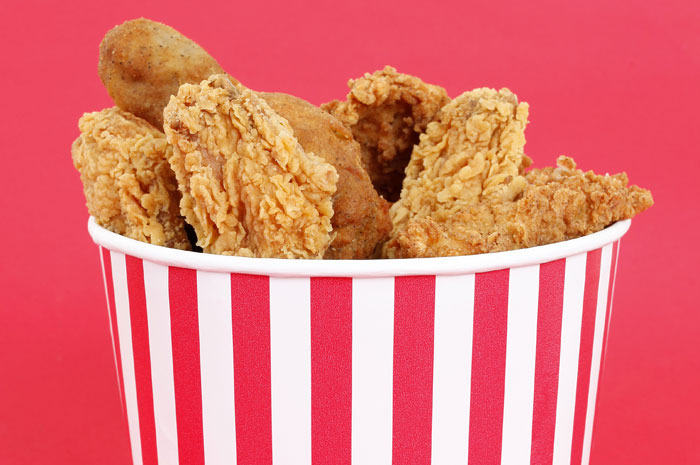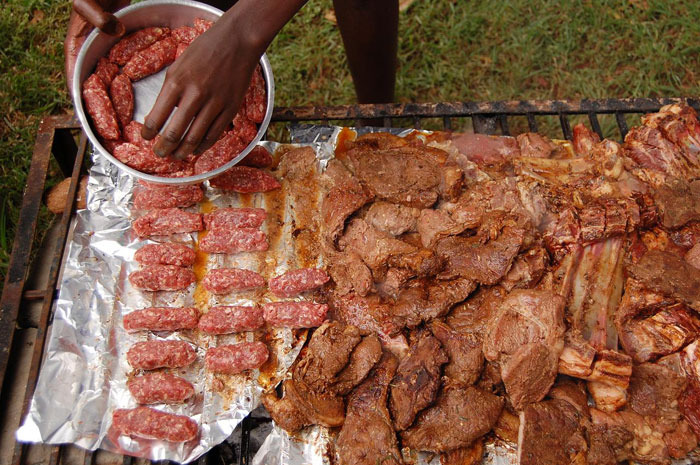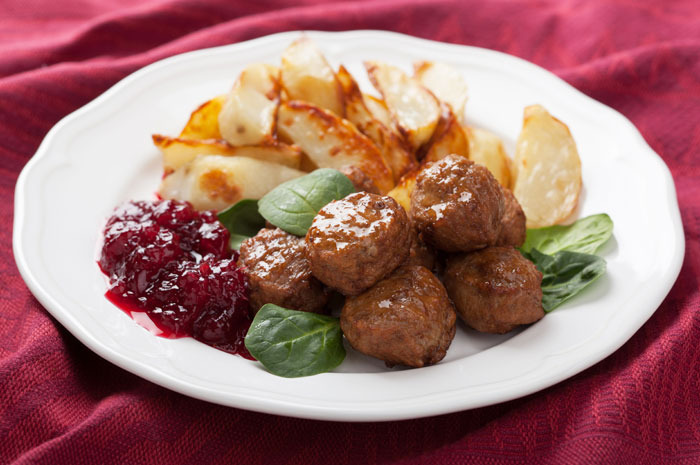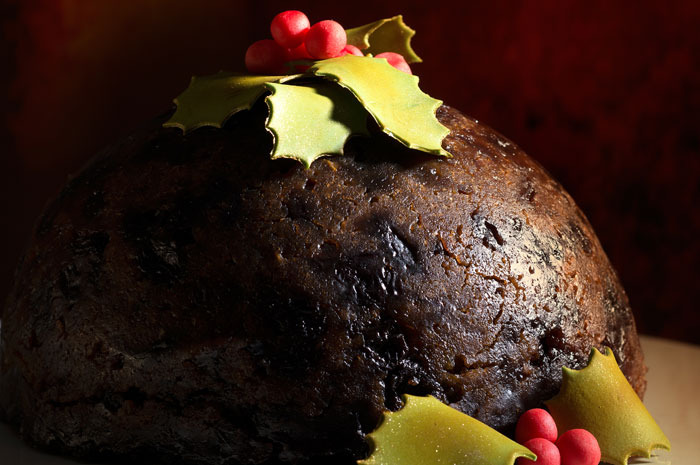Traditional Christmas Foods Around The World
The Daily Meal looks at the foods and drinks that help the rest of the world ring in that Yuletide cheer.
Chile
Christmas in Chile is big event. Families start praying a novena nine days before December 25 and attend midnight Mass on Christmas to celebrate Christ's birth. Afterward, even if it is 2 a.m., a huge dinner with typical Chilean foods is served. Think oven-roasted turkey, cazuela de ave (a special chicken soup), rice, puddings, and the traditional pan de Pascua, a sweet, fruit-based cake that is also left out for Santa when the kids go to bed. A traditional eggnog drink called cola de mono or "monkey's tail," made from coffee, milk, liquor, cinnamon, and sugar, is also served.
Denmark
The last two weeks before Christmas are known as the great baking period for the Danish. Everyone's favorite holiday cakes, breads, and confections are made using traditional family recipes. Think ginger snaps, gingerbread hearts, marzipan, fudge, crystal fruit, and more. While many could make a meal out of Danish desserts, there's plenty more on the holiday table '—, especially beer. Every year on the first Friday in November, Tuborg releases its new Christmas beer. Called Julebryg in Danish, the annual Christmas brew is darker and stronger than traditional lager, and its release marks the unofficial start to the Christmas season. For Christmas dinner, a typical Danish meal consists of roast pork — maybe a duck if you're feeling contemporary — with boiled potatoes, red cabbage, and gravy. The traditional Christmas dessert is risengrød, or rice pudding, with a whole peeled almond hidden inside. The finder of the nut gets a gift. The dessert is commonly served Christmas Eve, too, with leftovers set out for Santa.
France
A French Christmas dinner, Le Réveillon, will be full of foie gras, oysters, smoked salmon, and roasted capon. Depending on the region, you might get a chestnut-stuffed turkey or possibly a goose (in Alsace, for example), but no matter where you are, the bûche de Noël is the country's traditional Christmas dessert. It's a log-shaped cake slathered in buttercream and decorated with Christmas figurines. The cake's history stretches back to the Iron Age when European families would burn logs decorated with holly and ivy to celebrate the end of the winter season. As the years went on, hearths became smaller, so burning a log wasn't an option, but cooking a cake in the shape of one was. If you're in Provence, be prepared for a big dessert. The thirteen desserts of Christmas, or Le Treize Desserts de Noel, are meant to represent Jesus and the 12 apostles at the Last Supper and are a staple at Southern French households The treats are set out all at once and each guest must have a bit of each one. Don't worry, though: many of the 13 (the exact items vary from household to household) will be simple dried fruit or nuts.
Greece
The winter hog slaughter is a time-honored tradition all over Greece, making pork the preferred meat for Christmas dinner. Greek Orthodox religious tradition calls for a fasting period to start almost 40 days before Christmas. While the Christmas fast is not as strict as the Easter one, it is still practiced throughout most of Greece today. Dairy products are avoided on Mondays, Wednesdays, and Fridays, and meat is prohibited the entire time. Vegetables and legumes make up most of the meals during the fast, so it's not hard to see why Christmas dinner is so appealing. Along with fresh Christmas pork, served roasted or grilled, the Christmas table will also surely include Christopsomo, or "Christ's bread," a Greek specialty baked this time of year. This is a round loaf decorated with dough crosses. Each island or region has its own variation.
Italy
The famous feast of the seven fishes is an Italian-American tradition, not one actually celebrated in Italy. In fact, real Italian Christmas Eve dinner is generally light. It might begin with some light seafood dish, followed by pasta. In the north, it might be agnolotti filled with ricotta and spinach, while in the south, riso patate e cozze (rice with potatoes and mussels) might be on the plate. Wherever you are, Christmas Eve dinner, at least in traditional homes, will be senza carne,— without meat. For Christmas Day, regional specialties are found in each household, and the general flow of the meal is consistent: antipasto of cured meat, olives, and cheese; pasta — usually a pasticcio al forno, or a baked pasta dish — followed by a meat course of roasted veal, lamb, or chicken with potatoes. Seasonal fruit and dessert will follow and every table in Italy will have a panettone or some other sweet Christmas fruit bread set out.
Japan
If you're spending Christmas in Japan, you might be a bit disappointed in what you wind up getting for dinner. Not because it isn't delicious, but because you traveled all that way just for the Colonel's special recipe. Yes, the Japanese are crazy for KFC on Christmas. A bucket of fried chicken is so popular that the Japanese start placing orders two months in advance. It all started with a successful advertising campaign from the brand in 1974 called "Kurisumasu ni wa kentakkii!" (Kentucky for Christmas!). Since then, eating chicken at Christmas has become a national custom.
Kenya
Christmas dinner in Kenya is a reason to turn the grill on. It's a time for families to visit and for neighbors to drop in, so the barbie gets fired up and filled with nyama choma, or roasted meat; usually goat, as Kenyans are known as the kings of goat meat. It must be eaten hot, directly off the charcoals, and in one sitting. The Kikuyu and Maasai tribes have a rule that certain parts of goat are served to the boys and other cuts are for girls. In addition to goat, chapati, or fresh baked flat bread, is made and city dwellers may have Christmas cake.
Sweden
The Swedes celebrate Christmas on Christmas Eve, so their big meal happens then. The Christmas Eve smörgåsbord in Sweden is called a julbord. Traditionally the julbord is divided into different plates and eaten in five courses. First comes the seafood — think pickled herring, shellfish, and gravlax. Next, cold cuts including julskinka (Christmas ham), which only shows up this time of year, as well as turkey and roast beef, served with butter and vörtbröd, or a sweet dark bread. Swedish meatballs, red cabbage, boiled potatoes, and lutfisk — air-dried cod or whitefish soaked in lye — make up the next course. It's all washed down with glögg, or mulled wine. If you've got room on Christmas Day for a meal, it will be the leftovers from the night before, so wear stretch pants.
United Kingdom
Culinary Christmas celebrations in Britain started to take shape around the Victorian period. When Queen Victoria married Prince Albert, the two introduced Christmas traditions like sending around family Christmas cards and eating certain foods to celebrate. Mince pies, roast turkey, and goose were the centerpiece of dinner then and now. Turkey was often found on the tables of the wealthy then, but now it is a regular staple in many households. The Christmas pudding, or dessert, is a rich, fruity one, set ablaze with brandy to ward off evil spirits. A silver coin was hidden inside and meant to bring good fortune to whoever found it in his or her plate.
Venezuela
While you may get an array of tasty bites like pernil, or roast pork; pan de jamón, a loaf of bread filled with raisins and ham; and dulce de lechosa, a cold dessert made from green papaya and brown sugar, the single most important part of the Christmas meal in Venezuela is the hallacas. A balance of savory and sweetness, hallacas are much like tamales made with a cornmeal crust and stuffed with meat, olives, raisins, peppers and pickled vegetables. They are wrapped in banana leaves and boiled and served to eager guests. Hallacas are a time-consuming culinary treat to make, often requiring more than one person aiding in preparation, which may be why they are only eaten around Christmas. They are made in bulk and given out to friends and neighbors as gifts.
